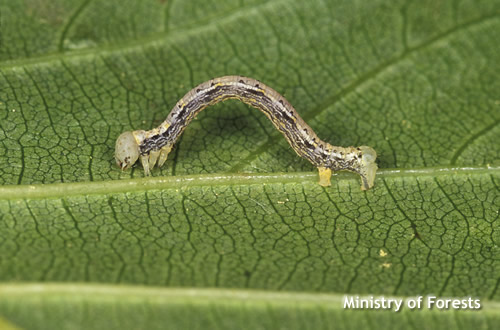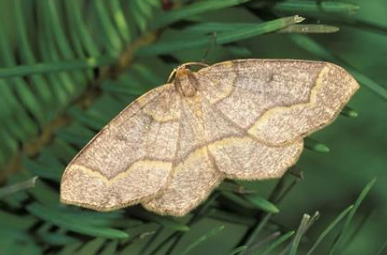Western hemlock looper
Lambdina fiscellaria lugubrosa
The western hemlock looper periodically reaches outbreak level causing severe damage to both Interior and coastal stands within British Columbia.
On this page
Description
Although outbreaks are short-lived (one to three years), the wide range of host species and ages, and extensive feeding on foliage of any age, results in high levels of mortality in heavily defoliated conifers. Loss of valuable timber, increased fire danger risks, and loss of important wildlife habitat can result from hemlock looper outbreaks.
Larvae hatch in the spring and feed lightly during May, June and early July before feeding heavily from the middle of July to October.
The outbreak frequency varies by location with the interior seeing an outbreak frequency of 11 years and the Coastal region 20 years. The duration of an outbreak is typically three years.
Host tree species
The western hemlock looper is a native defoliator of western hemlock, western redcedar, interior spruce and Douglas-fir.
Damage symptoms
Damage from western hemlock looper is generally visible in late summer as larvae develop and feed on susceptible host tree species. Looper larvae are known as wasteful feeders because they eat only part or all of both old and new foliage. A heavy infestation can result in the complete defoliation of a tree.
Defoliation from looper results in browning foliage and fallen needles at the base of the host trees.
 Damaged trees
Damaged trees
Identification images

Larva

Moth
Further reading
Read more about the western hemlock looper in the Field Guide to Forest Damage in B.C. (PDF, 6.6MB)
